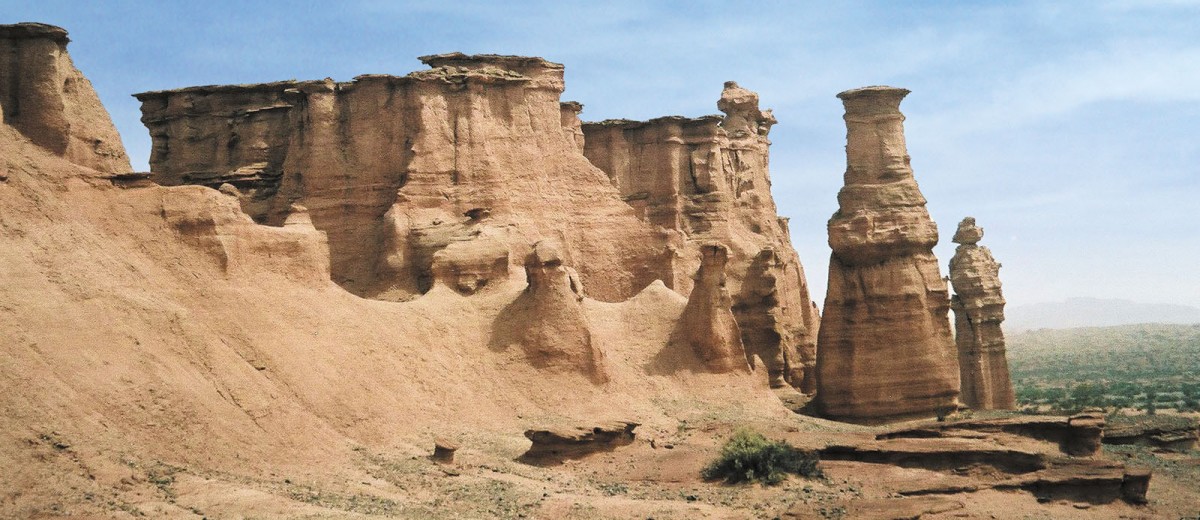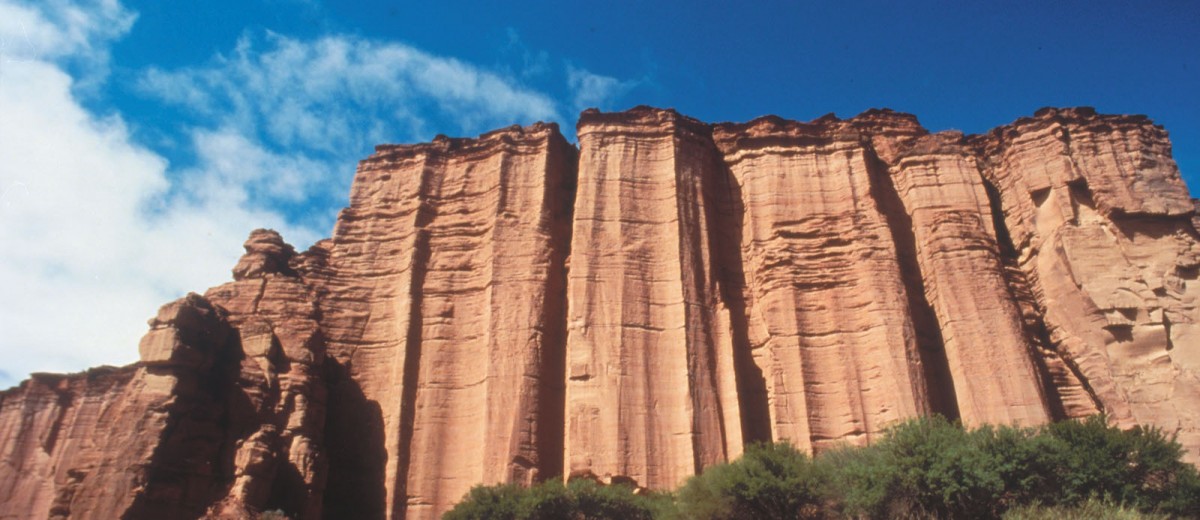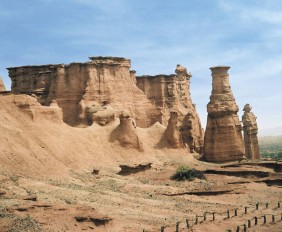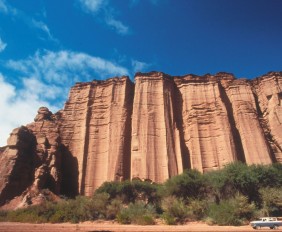TALAMPAYA NATIONAL PARK
This 270,000-hectare park situated 216 km from the city of La Rioja is strikingly similar to the Grand Canyon in the United States. It is located around 60 km from Villa Unión.
It houses world-famous paleontological, geological and archeological items from the Triassic period. This 215,000-hectare park is a desert area known as Ischigualasto Triassic Basin.
The climate in this area used to be different. There used to be vegetation and water, which resulted in the existence of a varied fauna. The landscape gradually changed until it became rugged.
The shapes wind and rain have molded tempted people’s creativity: some of the names given to them are: the three Magi, The Monk or The Chimneys, The finding of fossilized animals and plants, and the geological strata analyzed correspond to the events that took place during the Triassic period of the Mesozoic era 225 million years ago when reptiles were the owners of these lands.
The formation of the mountain range that took place 60 million years ago exposed this curious relief built by crushed clay and sandstones with a visible presence of iron oxide which determines the reddish colour of these walls of rock that surface in this area.
This ecosystem is one of the few places in the world were the different layers that make up the soil can be clearly observed and the way in which the internal movements of the hearth accommodated the layers that constitute it.
It is one of Argentina’s natural wonders. Its name is the combination of Quechua words that means “dry river by a tala”, which is a native tree. Touring around this native flora and fauna reserve that is also a paleontological and archeological deposit, is a great adventure. At some spots, the colorful ravines going from vermillion red to yellowish shades, narrow down so much that they can be 80 m wide with walls up to 180 m high.
Up high above the cliffs condors fly. There are also plenty of peculiar hardened gravel formations such as The Wizard, The Monk, The Towers, The Crib, The Balconies, The Cathedral, The Chess Board, and the Lost City, among others.
Scientific expeditions have retrieved mummies, pottery and a wide variety of fossils. The most noteworthy finding was a fossilized skeleton called “Rioja Saurian” that is said to be 220 million years old.
Small melt and spring crystal-clean water streams allow for the survival of desert area flora such as cactuses, rock rose, carob trees, tosca and healing herbs. The fauna includes foxes, hares, vicunas, guanacos, and condors.
Tours
Visitors can choose from five different tours. The first one is a 22 km tour to El Monje Canyon and takes 1 ½ – 2 hours.
The second tour reaches Los Pizarrones. It is a 44-km tour that takes 3 ½ to 4 hours.
The third one is a 66-km tour to Los Cajones and takes 4 ½ hours.
The fourth one reaches Ciudad Perdida (Lost City) on Gualo riverbed. It is a 112-km tour that takes 6 hours, 3 of which correspond to a walk. Visitors can camp provided they have previously obtained the necessary permission.
The last tour takes visitors to Los Chañares where they will see the greatest concentration of fossils in the area. It takes 6 hours.
Esta entrada también está disponible en: Spanish Portuguese (Brazil)








¿Qué te pareció la publicación?